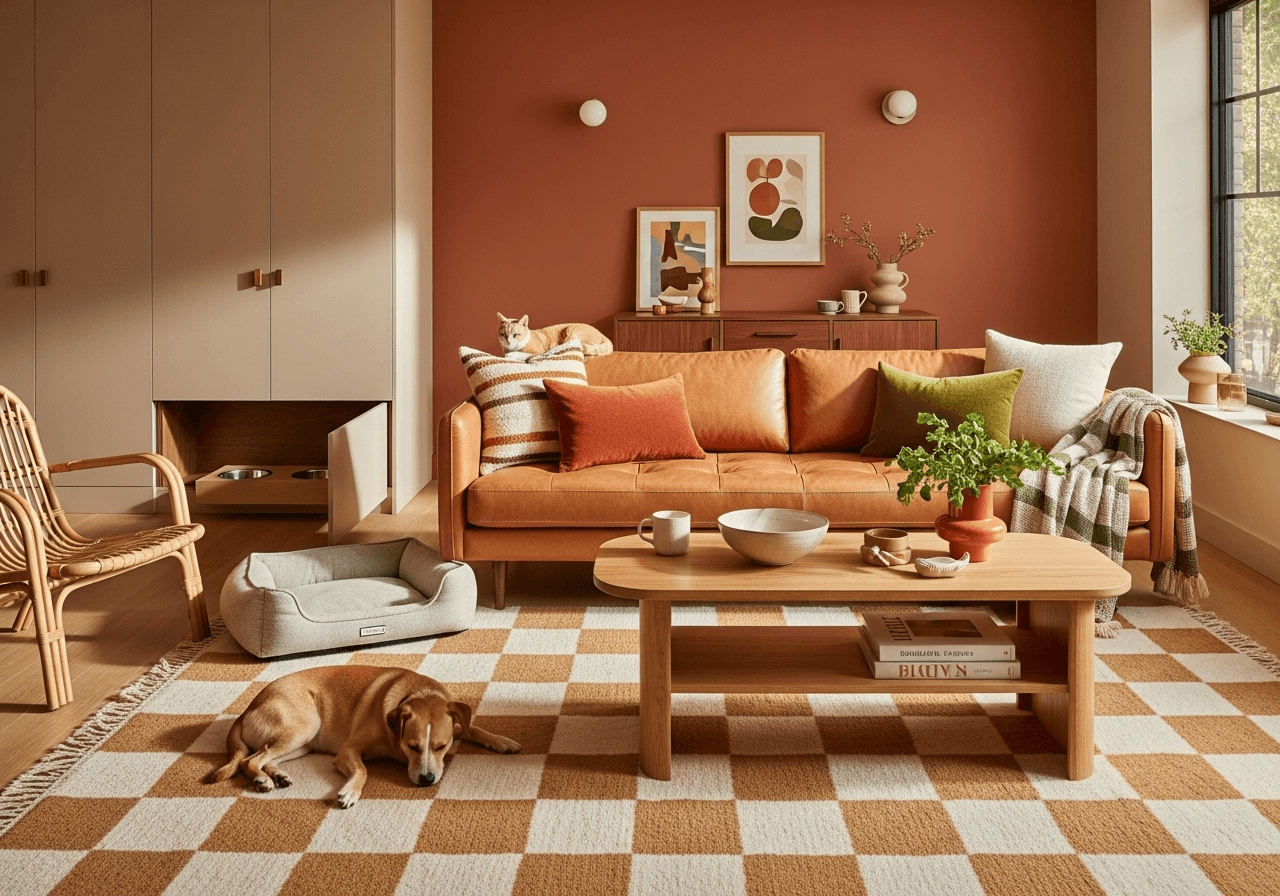Japandi Interior Design: Everything You Need to Know About Japandi Style
Finding the right interior design style for your living space often means getting inspired by various styles from around the world. If the Japandi style caught your eye, you’re in good company. Many people fall in love with the aesthetic’s nature-inspired decor. Read this guide to learn more about this interior decorating style and figure out how to make it work with your living space.
What Is Japandi Interior Design?

Japandi style combines Scandinavian and Japanese-style interior design, drawing on nature-based elements as a primary inspiration. It is primarily a visual nod to Japanese home decor and the wabi-sabi philosophy, which embraces natural imperfections like tears and cracks. Japanese houses appreciate imperfections as wisdom, not mistakes. There is no need to worry about making every detail perfect.
How Is Japandi Style Different from Scandinavian Style?
Scandinavian design prioritizes cozy and welcoming elements to make any living space a place for making memories. It has natural materials and clean lines, so it pairs well with the nature-inspired Japandi style. Combining the two design approaches and their intentions symbolizes the acceptance of imperfections in people and your surroundings while daring to love everything more because of them.
The Four Key Elements of Japandi Style

Incorporating Japandi interior design into your home requires four fundamental ideas. Add these style elements to your decorating plans to showcase Japandi decor like a pro.
1. Neutral Colors
Nature plays a central role in Japandi living rooms. Anyone following a Japanese decorating style should use neutral colors for paints, fabrics, and patterns. Use colors that appear in nature without human interference, like blues and greens.
Comparatively, Scandinavian-style spaces lean into off-white tones and neutral grays. Combining the two designs opens color possibilities to grays, whites and browns in addition to more classic nature colors like greens and blues. Explore the shades within and between each color to carefully craft your home's perfect Japandi color palette.
2. Natural Light
Natural sunlight is a significant part of the Japandi aesthetic. It fundamentally supports nature’s ecosystem by feeding plants and making the world safe for living things during the day. Utilize it in your home by maximizing large windows and using interior light fixtures less often while the sun’s out.
3. Minimalism
Many people often refer to Japandi style as the new Japanese minimalism. Scandinavian style and Japandi interior design prioritize simplicity. Everything you own should have a purpose, like seating arrangements with lumbar support or bookshelves that double as storage with cabinet doors. Keep clutter to a minimum to maintain this foundational element of Japandi homes long-term.
4. Sustainability
It would go against the interest of nature to utilize design features that harm the planet. It’s why a Japandi house prioritizes sustainability. Try choosing your paint selections, furniture and textiles based on manufacturers with sustainable facilities or eco-friendly materials.
The best part of sustainable interior design is its flexibility. You can define it however best fits your lifestyle and budget. Whether you define it with convertible furniture that serves numerous purposes like saving space or living in a home off the grid, there’s plenty of room to create your own meaning.
Japandi Decor Ideas

Start your Japandi design journey with these decor ideas that work in any living space. When you merge these ideas with your preferences, you’ll create your own version of the beloved aesthetic.
1. Eco-Friendly Paint
The average person pays a professional painter between $2 and $6 per square foot of wall space when painting a room. That’s a significant investment when you’re about to paint a sizeable living room or bedroom. Ensure you’re getting something that matches sustainable Japandi values by opting for eco-friendly paint in your desired shades.
Sustainable paint brands outline their environmental commitments on their websites, so research potential brands before buying anything. If their paint has organic ingredients that don’t release airborne chemicals while drying or include chemical drying agents, you’ll formulate a list of potential products as you narrow down your paint options.
2. Bamboo Flooring and Furniture

Bamboo is one of the most sustainable wood materials on the planet. It grows much faster than traditional tree species like oak, so manufacturers can quickly replace the natural resource after harvesting. It’s also a visual reference to the centuries of bamboo houses and wall dividers that add organic textures to traditional Japanese design.
Consider bamboo as your primary material for new flooring, furniture, or decorative items. It combines natural aesthetics and eco-friendly values that make people fall in love with the Japandi style.
3. Organic Textiles
The fabrics used in your couch, rugs, and carpet aren’t inherently organic. Manufacturers often treat and dye their textiles with chemicals to make them last longer. Sustainable interior design means finding eco-friendly fabrics for these replacements. A Japandi rug or blanket is an incredible way to weave more nature into your home and make your interior design planet-friendly.
Textiles are also an opportunity to rethink your curtains. Thinner fabric made with organic cotton or linen will let more natural light in through any sized window, further accentuating your love of Japandi-styled homes.
4. Straight-Edged Furniture and Decor
You’ll see plenty of straight edges and pointed corners in Japandi-style living rooms. Straight edges are a core part of modern Japanese interior design and a visual way to call back to natural elements like waterfalls, tree trunks, and cliffs. Avoid rounded cushions and frames while redecorating your home to align more with Japandi interior design.
5. Plush Fabrics

Moss-covered soil and lush, grassy fields prevent nature from consisting of just cold rocks and barren ground. Weave that natural element into your Japanese-style house with high-pile carpeting, evoking thick grasses in a meadow. Boucle upholstery fabric transforms couches into mossy lounge furniture, especially if you choose greens as the primary color in your palette of neutrals.
Enjoy Redecorating Your Home
Anyone can redecorate or renovate their home using the Japandi style. Once you know the interior design aesthetic, daydream about how the various types of decor and colors would look in your Japanese living room. You'll know it's the right choice when your design matches the style's focus on simplicity and sustainability.
Looking to bring some calming Japandi style to your home? Check out the DecorMatters app for calming Japandi furniture to create a peaceful home office or tranquil bedroom retreat. Decorate your walls and spaces with peaceful touches that combine simplicity and nature for a harmonious feel. Download the DecorMatters app today and start creating your dream Japandi-inspired home!












 20h left
20h left




